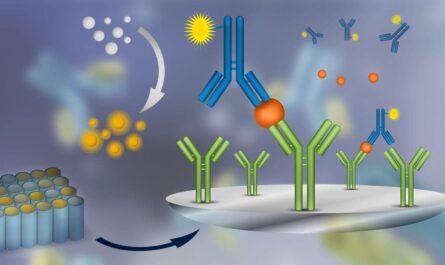
Neuropathic Ocular Pain: An Overview
Neuropathic ocular pain is a type of chronic pain that originates from dysfunction or damage of the trigeminal nerve, the nerve responsible for sensation in the face, eyes and scalp. This article will discuss the causes, symptoms, diagnosis and treatment options available for neuropathic ocular pain.
Causes of Neuropathic Ocular Pain
There are several medical conditions that can potentially cause neuropathic ocular pain by damaging the trigeminal nerve. Some of the common causes include:
Trigeminal Neuralgia: Also known as Tic Douloureux, it is characterized by sudden, severe, sharp pain in the face usually caused by compression or irritation of branches of the trigeminal nerve. The exact cause is often unknown but it may be due to compression of blood vessels.
Herpes Zoster Ophthalmicus: Shingles infection of the eye which is caused by varicella zoster virus. The virus lays dormant in nerve cells after primary infection (chickenpox) and reactivates later, causing a painful rash along the distribution of the trigeminal nerve.
Diabetes: High blood sugar levels in diabetes can damage nerve fibers over time leading to diabetic neuropathy. This may manifest as persistent pain, numbness or tingling sensation around the eyes.
Multiple Sclerosis: An autoimmune disorder where the immune system attacks the protective sheath (myelin) surrounding nerves. Trigeminal nerve involvement can cause neuropathic ocular pain.
Trauma or Surgery: Direct injury or compression of the trigeminal nerve from facial trauma, surgeries like dental work or tumors can also trigger neuropathic ocular pain.
Symptoms of Neuropathic Ocular Pain
The symptoms of ocular neuropathic pain depend on the specific area and branches of the trigeminal nerve involved. Common symptoms include:
– Sharp, stabbing or burning pain around one or both eyes
– Painful sensations deep inside the eye
– Eyelid tenderness or pain with blinking
– Forehead, cheek or jaw pain referred from eyes
– Increased pain from stimuli like light touch, cold, wind or chewing
– Allodynia – pain from normally non-painful stimuli
The pain is often described as intense, shock-like or electric shock-like sensations. It can be episodic or constant with varying intensities.
Diagnosis of Neuropathic Ocular Pain
The diagnosis primarily involves a detailed history and neurological examination by a doctor trained to diagnose neuropathic pain disorders. Tests ordered may include:
– Corneal sensation test to check trigeminal nerve function
– Slit lamp eye exam to rule out other causes
– MRI or CT scan of brain and orbits to check for compression or lesions
– Evoked potential tests like Blink Reflex Test
– Blood tests for diabetes or vitamin deficiencies if indicated
– Genetic testing for inherited causes
Establishing the cause is important to guide treatment options for neuropathic ocular pain. A trial treatment may also help confirm the diagnosis.
Management and Treatment
The treatment plan is tailored according to the underlying cause and severity of pain. Some options include:
Lifestyle Modifications: Getting enough sleep, managing stress through relaxation techniques, wearing eyewear to protect from triggers.
Medications: Oral antidepressants/anti-seizure drugs are first line to reduce nerve hyperactivity. Local anesthetics or steroids may provide temporary relief.
nerve blocks
Surgery: Microvascular decompression or gamma knife radiosurgery for trigeminal neuralgia not responding to medications. Decompression surgery for traumatic nerve damage.
Complementary therapies: Acupuncture, TENS, Botox injections, occupational therapy.
Managing any underlying medical conditions like diabetes or multiple sclerosis is also important. A multidisciplinary approach usually provides the best outcomes for chronic neuropathic ocular pain. However, it often remains a difficult condition to treat completely.
Prognosis of Neuropathic Ocular Pain
The prognosis depends on the cause and how well it is controlled with treatment. Trigeminal neuralgia generally has a good prognosis with proper management. Other causes like diabetic neuropathy or post-herpetic neuralgia tend to have a more variable course depending on disease control. Complete pain resolution may not always be possible but significant improvements are achievable in many cases with a multifaceted treatment strategy.
Conclusion
In summary, neuropathic ocular pain stems from damage or dysfunction of the trigeminal nerve pathways. Though challenging to diagnose and treat, a multidisciplinary medical approach tailored to the individual provides the best chance for pain control and improved quality of life. Further research continues to advance our understanding and management options for this debilitating chronic pain condition.
*Note:
- Source: Coherent Market Insights, Public sources, Desk research
- We have leveraged AI tools to mine information and compile it

